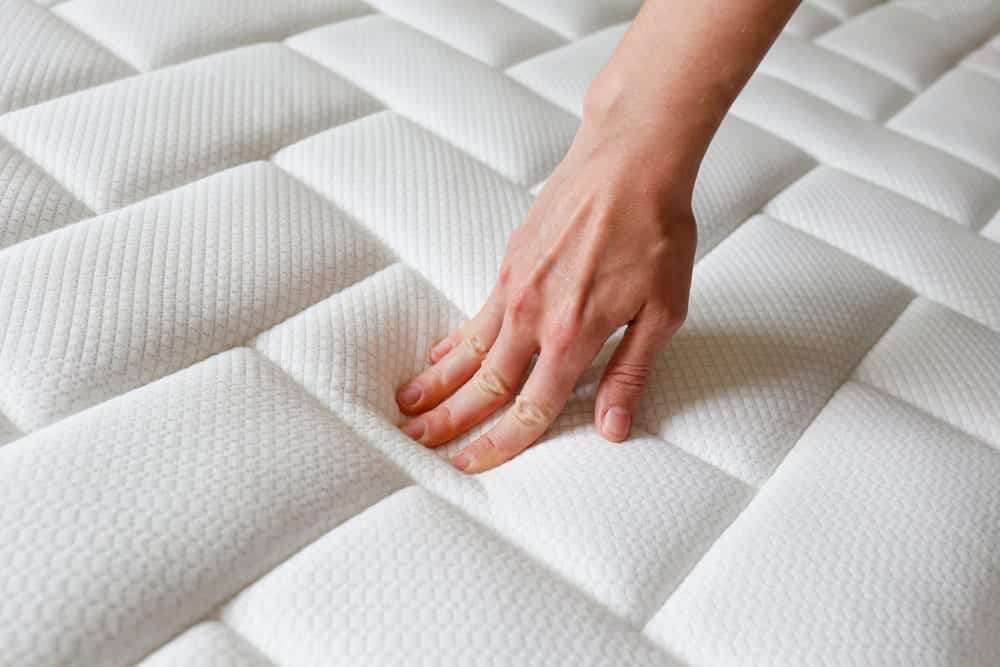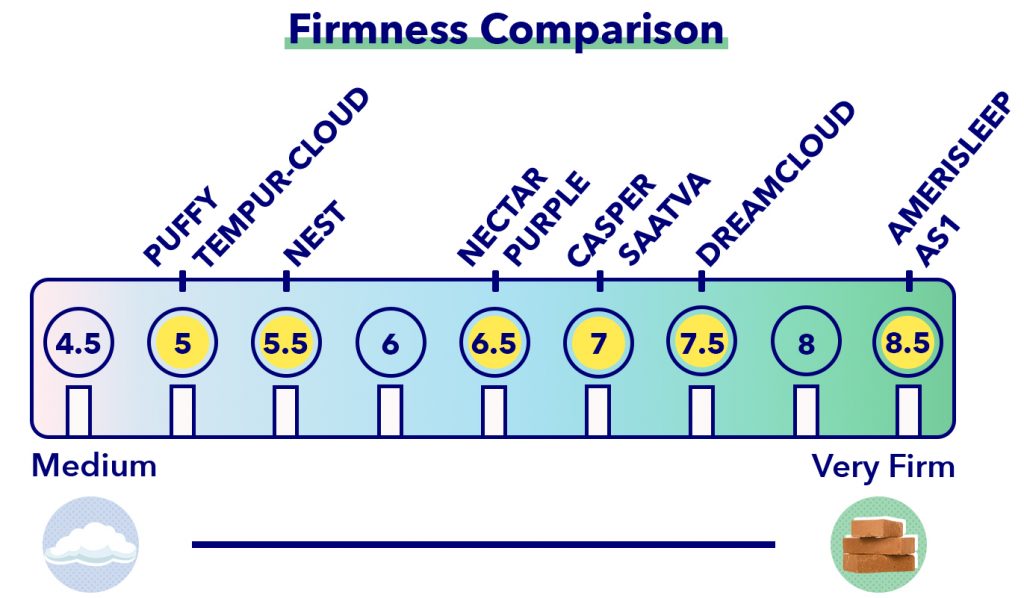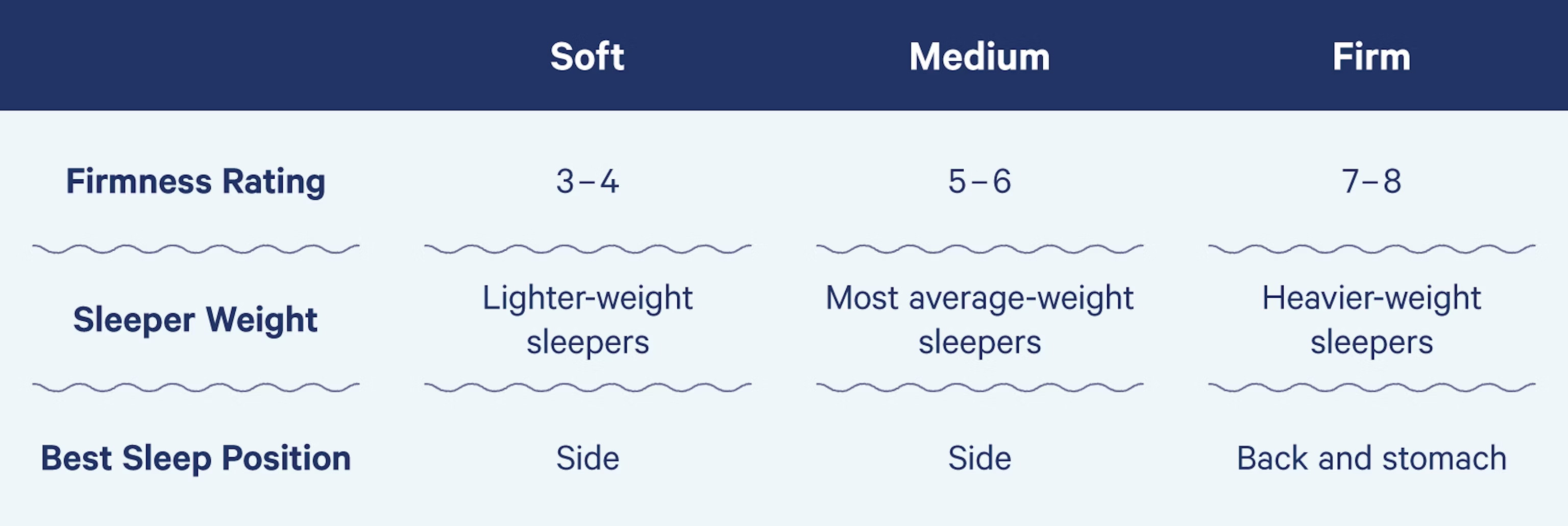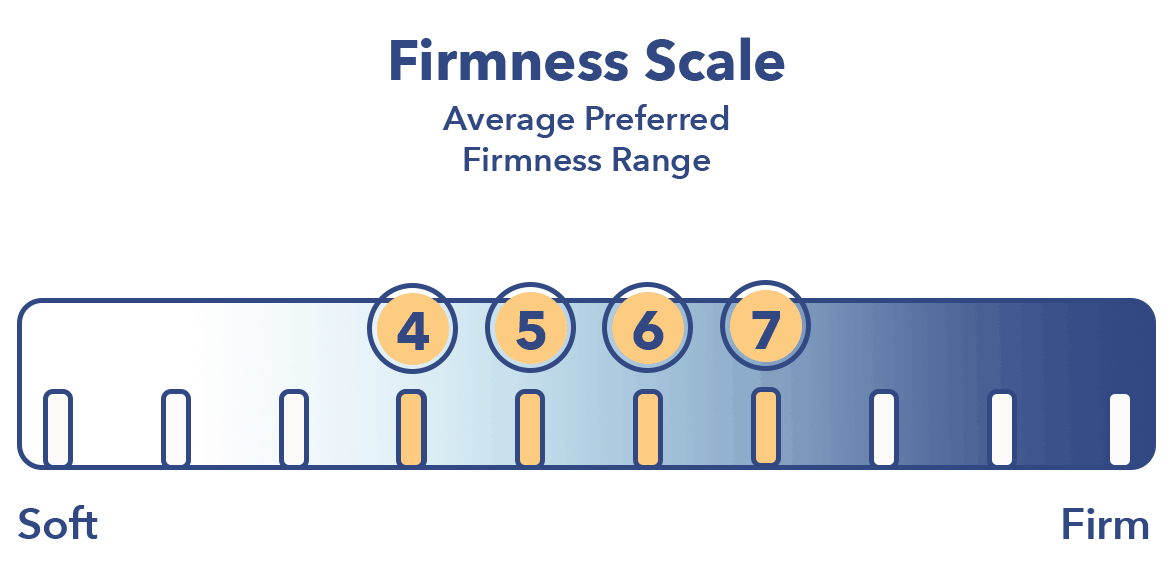1. Understanding Mattress Firmness: A Guide to Choosing the Right Bed
When it comes to getting a good night's sleep, one of the most important factors is having the right mattress for your body. But with so many options available, it can be overwhelming to know which one is the best for you. That's where the concept of mattress firmness comes in.
Mattress firmness refers to the level of support and comfort a mattress provides. It can range from very soft to very firm, with different levels in between. The level of firmness you need depends on your body type, sleeping position, and personal preferences.
If you're in the market for a new mattress, understanding the different levels of firmness and how to choose the right one for you is crucial. In this guide, we'll break down everything you need to know about mattress firmness and help you find the perfect bed for a better night's sleep.
2. Mattress Firmness Scale: What Do the Numbers Mean?
Most mattress companies use a firmness scale to help customers understand the level of support their mattresses offer. This scale typically ranges from 1 to 10, with 1 being very soft and 10 being very firm.
But what do these numbers actually mean? Here's a breakdown of the different levels of firmness you'll commonly find on the scale:
1-2: Extremely soft and plush, these mattresses provide very little support and are best for people who prefer to sink into their bed.
3-4: Soft and comfortable, these mattresses offer a good balance of cushioning and support and are ideal for side sleepers.
5-6: Medium firmness, these mattresses provide a balance of comfort and support that's suitable for most people.
7-8: Firm and supportive, these mattresses are best for back and stomach sleepers who need extra support to keep their spine aligned.
9-10: Extra firm, these mattresses offer very little give and are ideal for people who need maximum support and firmness.
3. How to Choose the Right Firmness for Your Mattress
When considering the firmness of a mattress, there are a few key factors to keep in mind:
Body Type: Different body types require different levels of support. For example, someone with a lighter frame may need a softer mattress to prevent pressure points, while someone with a heavier frame may need a firmer mattress for better support.
Sleeping Position: Your sleeping position also plays a role in the level of firmness you need. Side sleepers often prefer a softer mattress to cushion their shoulders and hips, while back and stomach sleepers may need a firmer mattress to keep their spine aligned.
Personal Preferences: Ultimately, the level of firmness you choose should also be based on your personal preferences. If you've always slept on a soft mattress and feel comfortable that way, then that's the right level of firmness for you.
4. The Best Firmness Scale for Mattresses: A Comprehensive Guide
Now that you have a better understanding of mattress firmness and how to choose the right level for you, let's take a closer look at the different levels of firmness and their pros and cons.
5. Firmness Scale for Mattresses: What You Need to Know
When shopping for a mattress, it's essential to pay attention to the firmness scale and understand what each level means. Keep in mind that firmness can also be subjective, so it's best to try out different levels and see which one feels the most comfortable for you.
It's also important to note that the firmness of a mattress can change over time. As a mattress ages, it may become softer or firmer, so it's crucial to regularly check for signs of wear and tear and replace it when needed.
6. Exploring the Different Levels of Mattress Firmness
Now that you have a better understanding of the firmness scale and how it relates to your sleeping needs, it's time to explore the different levels in more detail.
7. Mattress Firmness Scale: Understanding the Differences
While the firmness scale may seem straightforward, it's essential to understand that different mattress companies may have slight variations in their firmness levels. For example, one company's medium-firm mattress may feel more like a firm mattress from another company.
That's why it's crucial to do your research and read reviews from customers to get a better understanding of how a particular mattress feels and performs.
8. Finding the Perfect Firmness: A Breakdown of the Mattress Firmness Scale
Ultimately, the perfect firmness for your mattress is a personal choice that depends on your body type, sleeping position, and preferences. But with the right understanding of the firmness scale, you can narrow down your options and find the best mattress for you.
Remember to consider factors like body type, sleeping position, and personal preferences when choosing the level of firmness for your mattress. And don't be afraid to try out different options to find the perfect balance of comfort and support.
9. How to Use the Mattress Firmness Scale to Find Your Ideal Bed
Now that you know all about the different levels of firmness and what they mean, here's a step-by-step guide to using the mattress firmness scale to find your ideal bed:
Step 1: Consider your body type and sleeping position to determine the level of support you need.
Step 2: Look at the firmness scale and decide which level you think would be the best for you based on your needs and preferences.
Step 3: Read reviews and try out different mattresses with that level of firmness to see how they feel.
Step 4: Make your final decision based on comfort and support, not just the number on the firmness scale.
10. The Importance of Mattress Firmness: How to Choose the Right Level for You
Choosing the right level of firmness for your mattress is crucial for getting a good night's sleep and maintaining your overall health and well-being. A too-soft or too-firm mattress can lead to aches, pains, and discomfort, while the right level of firmness can provide the support your body needs for optimal rest and rejuvenation.
By understanding the firmness scale and considering your body type, sleeping position, and personal preferences, you can find the perfect mattress for your needs and enjoy a better sleep experience every night.
Finding the Perfect Firmness Scale for Your Mattress
Understanding the Importance of Firmness in Mattresses
 When it comes to getting a good night's sleep, the
firmness
of your
mattress
plays a crucial role.
Firmness
refers to the level of support and comfort that a
mattress
provides. It is determined by the materials used in the
mattress
and the construction of its layers.
Firmness
is a personal preference and varies from person to person based on their body type, sleeping position, and any underlying medical conditions. It is essential to find the right
firmness
level for your
mattress
to ensure a good night's sleep and prevent any potential aches and pains.
When it comes to getting a good night's sleep, the
firmness
of your
mattress
plays a crucial role.
Firmness
refers to the level of support and comfort that a
mattress
provides. It is determined by the materials used in the
mattress
and the construction of its layers.
Firmness
is a personal preference and varies from person to person based on their body type, sleeping position, and any underlying medical conditions. It is essential to find the right
firmness
level for your
mattress
to ensure a good night's sleep and prevent any potential aches and pains.
The Firmness Scale Explained
 To help consumers make an informed decision,
mattress
manufacturers use a
firmness scale
to rate their products. The scale typically ranges from 1 to 10, with 1 being the softest and 10 being the firmest.
Medium-firm
is considered the industry standard and falls between a 5 and 7 on the scale. However, this can vary from brand to brand, and it is essential to test out different
mattresses
to find the right
firmness
for you.
To help consumers make an informed decision,
mattress
manufacturers use a
firmness scale
to rate their products. The scale typically ranges from 1 to 10, with 1 being the softest and 10 being the firmest.
Medium-firm
is considered the industry standard and falls between a 5 and 7 on the scale. However, this can vary from brand to brand, and it is essential to test out different
mattresses
to find the right
firmness
for you.
Finding Your Perfect Firmness Level
 To determine the ideal
firmness
for your
mattress
, you must consider your body type, sleeping position, and any underlying medical conditions. For example, side sleepers typically need a softer
mattress
to relieve pressure points, while back and stomach sleepers may prefer a firmer
mattress
for proper spinal alignment. Additionally, those with back pain or joint issues may benefit from a
mattress
with a higher
firmness
level for added support.
To determine the ideal
firmness
for your
mattress
, you must consider your body type, sleeping position, and any underlying medical conditions. For example, side sleepers typically need a softer
mattress
to relieve pressure points, while back and stomach sleepers may prefer a firmer
mattress
for proper spinal alignment. Additionally, those with back pain or joint issues may benefit from a
mattress
with a higher
firmness
level for added support.
The Importance of Trying Before Buying
 While the
firmness scale
can give you a general idea of the level of support a
mattress
offers, it is crucial to try out different options before making a purchase. Many
mattress
companies offer a trial period, allowing you to test out the
mattress
in the comfort of your own home. This is the best way to determine if the
firmness
level is right for you and make an informed decision.
In conclusion, finding the perfect
firmness scale
for your
mattress
is crucial for a good night's sleep. Remember to consider your unique needs and try out different options to find the ideal
firmness
level for you. With the right
firmness
, you can wake up feeling well-rested and ready to take on the day.
While the
firmness scale
can give you a general idea of the level of support a
mattress
offers, it is crucial to try out different options before making a purchase. Many
mattress
companies offer a trial period, allowing you to test out the
mattress
in the comfort of your own home. This is the best way to determine if the
firmness
level is right for you and make an informed decision.
In conclusion, finding the perfect
firmness scale
for your
mattress
is crucial for a good night's sleep. Remember to consider your unique needs and try out different options to find the ideal
firmness
level for you. With the right
firmness
, you can wake up feeling well-rested and ready to take on the day.






























































